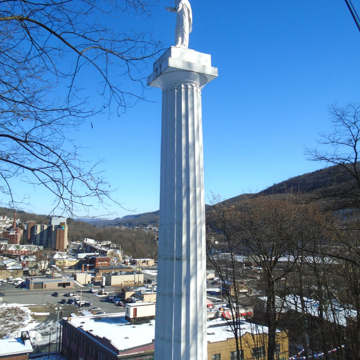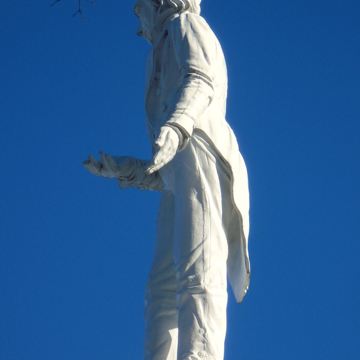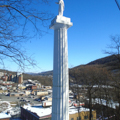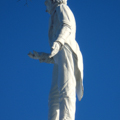In the nineteenth century, great civic wealth often led to great extravagance—witness Philadelphia's City Hall ( PH49)—but few gestures are more memorable than this colossal Doric column, nearly 175 feet in height surmounted by a two-story-high cast-iron figure of Henry Clay cast by Richard Wood, a Philadelphia iron founder. The column and figure, now painted a ghostly white, were conceived after Clay's death in 1851 to commemorate his tariff legislation that protected Pennsylvania's coal industry. Worthy Gilded Age survivals surround the Clay monument, among them the towered Second Empire Atkins house across S. Centre Street and the offices for P. W. Sheafer's estate (1893), now the Young Women's Christian Association, an elegant Renaissance Revival essay in Roman brick at 325 S. Centre Street.
You are here
Henry Clay Monument
If SAH Archipedia has been useful to you, please consider supporting it.
SAH Archipedia tells the story of the United States through its buildings, landscapes, and cities. This freely available resource empowers the public with authoritative knowledge that deepens their understanding and appreciation of the built environment. But the Society of Architectural Historians, which created SAH Archipedia with University of Virginia Press, needs your support to maintain the high-caliber research, writing, photography, cartography, editing, design, and programming that make SAH Archipedia a trusted online resource available to all who value the history of place, heritage tourism, and learning.





